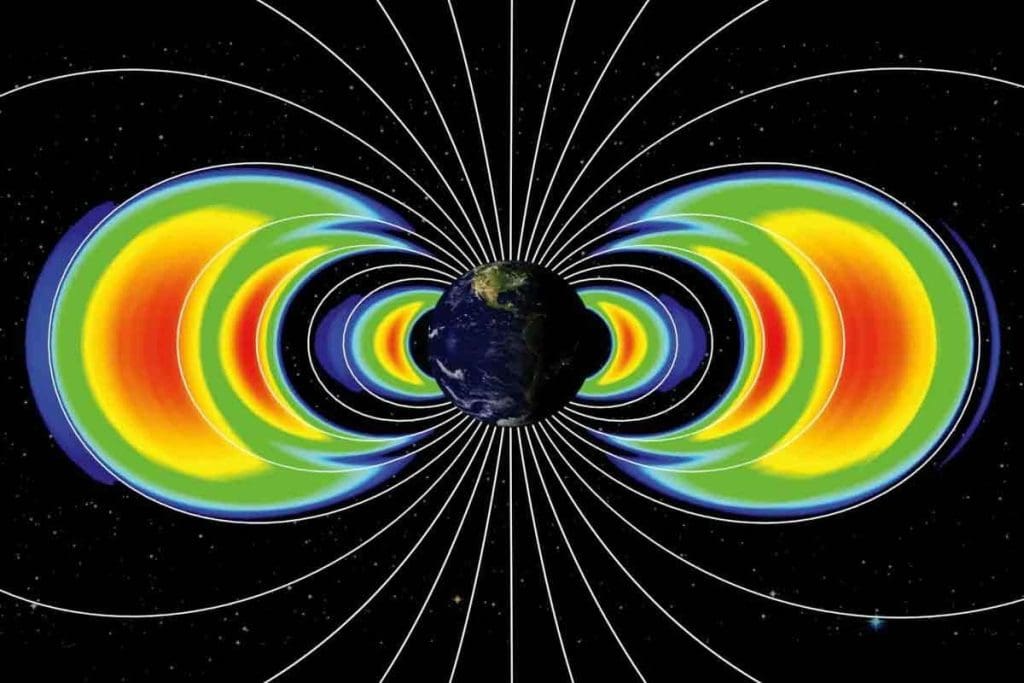Last Updated on November 27, 2025 by Bilal Hasdemir

Radiation is key in science and medicine. It’s important for energy transfer and in modern health checks.
At Liv Hospital, we aim to offer top-notch healthcare. We also support patients from around the world. To see why radiation matters in health, we need to understand its science. The US EPA says radiation is energy all around us. It comes from nature and human-made things.This guide will give an example of radiation and more. Uncover 7 powerful and essential examples of radiation found in science and everyday life.
Radiation is energy that moves through space or materials. It can be waves or particles. Knowing about it helps us understand its role in our lives.
Key Takeaways
- Radiation is a form of energy emitted by various sources.
- It can be found in different forms, such as waves or particles.
- Understanding radiation is vital for its use in healthcare.
- Radiation has different types, like ionizing and non-ionizing.
- Liv Hospital is dedicated to quality healthcare services.
What Is Radiation? Scientific Definition and Meaning

In science, radiation means sending or moving energy as waves or fast particles. This includes everything from the light we see to X-rays in medical scans. Knowing about radiation helps us understand its importance in our lives and its uses in many fields.
The Basic Concept of Energy Transmission
Radiation is all about moving energy through space. It can be in many forms, like electromagnetic waves (like radio waves and X-rays) or particle radiation (like alpha and beta particles). This idea is key to understanding many natural and technological things.
Radiation in Scientific Terms
Scientifically, radiation is about moving energy through a medium, like air or space. The International Atomic Energy Agency says it’s when energy is sent out as particles or waves. This shows radiation can act like both waves and particles.
| Type of Radiation | Description | Examples |
| Electromagnetic Radiation | Energy transmitted through electromagnetic waves | Radio waves, Light, X-rays |
| Particle Radiation | Energy transmitted through high-speed particles | Alpha particles, Beta particles |
The Etymology and History of the Term
The word “radiation” comes from “radiare,” the Latin for “to emit rays.” The study of radiation started with Wilhelm Conrad Röntgen’s discovery of X-rays in 1895. Our knowledge of radiation has grown a lot, showing its role in life, from natural background radiation to medical uses.
We keep learning about radiation, its sources, and effects. This helps us grow our science, medicine, and technology knowledge.
The Physics Behind Radiation: Waves and Particles

To understand radiation, we need to know about its wave-like and particle-like behaviors. It’s a form of energy that surrounds us. Knowing its physics helps us see its uses and effects.
Electromagnetic Waves Explained
Electromagnetic waves are a key type of radiation. They have frequency and wavelength and can travel through empty space. This category includes radio waves, microwaves, infrared, visible light, ultraviolet, X-rays, and gamma rays.
Characteristics of Electromagnetic Waves:
- They can travel through empty space.
- Their speed in a vacuum is constant, approximately 299,792 kilometers per second.
- They exhibit both wave-like and particle-like properties.
Particle Radiation Characteristics
Radiation can also be in the form of particles. This includes alpha particles, beta particles, and neutrons. These particles are emitted from the nucleus of an atom during certain types of radioactive decay.
Key Features of Particle Radiation:
- They are emitted from the nucleus of atoms.
- Their range and penetration power vary depending on the type and energy of the particles.
- They can be harmful if they interact with living tissues.
The Electromagnetic Spectrum
The electromagnetic spectrum covers all possible frequencies of electromagnetic radiation. It ranges from longer wavelengths to shorter wavelengths. This includes radio waves, microwaves, infrared, visible light, ultraviolet, X-rays, and gamma rays.
| Type of Radiation | Wavelength Range | Common Uses |
| Radio Waves | 1 mm to 100 km | Communication, broadcasting |
| Microwaves | 1 mm to 1 m | Heating, wireless communication |
| Infrared | 700 nm to 1 mm | Thermal imaging, heating |
| Visible Light | 400 nm to 700 nm | Illumination, vision |
| Ultraviolet | 10 nm to 400 nm | Sterilization, spectroscopy |
| X-rays | 0.01 nm to 10 nm | Medical imaging |
| Gamma Rays | <0.01 nm | Cancer treatment, sterilization |
Types of Radiation: Ionizing vs. Non-Ionizing
Ionizing and non-ionizing radiation are two main types of radiation. They differ in energy and how they interact with matter. Knowing about these differences helps us understand how radiation affects living things and the environment.
Effects of Ionizing Radiation on Matter
Ionizing radiation has enough energy to remove electrons from atoms, creating ions. This includes X-rays, gamma rays, and alpha particles. It can damage cells and DNA, leading to cancer and genetic changes. The effects of ionizing radiation on matter are profound and can be harmful.
A leading expert says, “Ionizing radiation is a significant concern due to its biological harm.”
“Ionizing radiation can alter the DNA in cells, leading to mutations and potentially causing cancer.”
Properties of Non-Ionizing Radiation
Non-ionizing radiation has lower energy and can’t ionize atoms or molecules. Examples are radio waves, microwaves, and visible light. Non-ionizing radiation is generally less harmful but can cause heating or tissue damage at high intensities.
- Radio waves: Used for communication
- Microwaves: Used for heating and cooking
- Visible light: Essential for vision
Energy Thresholds and Boundaries
The line between ionizing and non-ionizing radiation is set by the energy needed to ionize atoms. Radiation with energies above a few electronvolts is ionizing. Knowing these energy levels is key to understanding radiation risks.
| Type of Radiation | Energy Level | Ionizing |
| Gamma Rays | High | Yes |
| Radio Waves | Low | No |
Natural Sources of Radiation in Our Environment
Natural sources of radiation are everywhere and affect our exposure. We are always surrounded by radiation from natural sources. These sources are a key part of our world.
Cosmic Radiation from Space
Cosmic radiation comes from outside our atmosphere. It includes high-energy particles from the sun and space. These particles, like protons and electrons, hit the Earth all the time.
The strength of cosmic radiation changes with the sun’s activity and Earth’s magnetic field. At higher places, like on mountains or in planes, we get more cosmic radiation. This is because there’s less air to block it.
Terrestrial Radiation from Earth
Terrestrial radiation comes from the Earth itself. It’s mainly from radioactive materials like uranium and thorium in the ground. These materials are in soil, rocks, and buildings, adding to our background radiation.
The amount of terrestrial radiation varies by location. Places with more uranium and thorium, like parts of the U.S., India, and Brazil, have higher levels. This is because of the Earth’s geology.
Internal Radiation in Living Organisms
Internal radiation is from radioactive materials inside us. The main source is potassium-40, a radioactive isotope of potassium. It’s in all living things and adds to our internal radiation.
Other radionuclides, like carbon-14 and tritium, also exist in our bodies. They get into our tissues through metabolism. These are natural parts of us.
Background Radiation Levels
Background radiation is the total of cosmic, terrestrial, and internal radiation. It changes based on where you are, how high you are, and the local geology. Knowing about background radiation helps us understand extra radiation from human activities.
Average background radiation levels are a starting point for checking radiation from medical and industrial sources. Watching background radiation helps set safety rules for radiation protection.
Man-Made Sources of Radiation
We are surrounded by man-made sources of radiation. They are used in medical treatments, industrial processes, and consumer products. These sources help us in many ways, like advancing technology, improving healthcare, and creating energy.
Medical Applications and Diagnostic Tools
Man-made radiation is key in medicine, for imaging and treating diseases. Radiation therapy is a common treatment for cancer. It helps destroy or slow cancer cells.
Technologies like X-ray and CT scans give doctors clear images of our bodies. This helps them diagnose diseases early and treat them better.
Industrial Uses and Power Generation
In industry, radiation is used for nondestructive testing and sterilization. It checks materials without damaging them. This ensures equipment is safe and reliable.
Nuclear power plants use radiation to make electricity. This clean energy source is a big help worldwide. It doesn’t pollute like fossil fuels do.
Consumer Products and Electronics
Some products, like smoke detectors, have radioactive materials. Luminescent watches and glow-in-the-dark items also use them.
Nuclear Technology Applications
Nuclear technology is used in many ways, not just for power. It helps in medicine, industry, and research. Radioisotopes are used for diagnosis and treatment in medicine. They help trace and analyze in industry and study the environment and biology in research.
It’s important to know how man-made radiation sources work. They help us a lot, but we must use them safely. This way, we can keep moving forward in many areas while staying safe.
Let’s Give an Example of Radiation: 7 Common Forms
Exploring radiation in our lives shows its many forms. Some we can see and feel, while others are invisible. We need special tools to find them.
Example 1: Visible Light – The Radiation We See
Visible light is what we see every day. It lets us see the world. Without it, we wouldn’t know our surroundings.
Example 2: Ultraviolet Radiation – Beyond Visible Light
Ultraviolet (UV) radiation is not seen by us. It has shorter wavelengths than visible light. UV can cause sunburn and is used to kill germs.
Example 3: X-rays – Penetrating Radiation for Medical Imaging
X-rays are used in medical imaging. They go through soft tissues but stop at denser materials like bone. This helps doctors diagnose.
Example 4: Gamma Rays – High-Energy Radiation
Gamma rays have the highest energy. They are used in cancer treatment and come from some radioactive materials.
Example 5: Radio Waves – Long-Wavelength Radiation
Radio waves have the longest wavelengths. They are used for communication, like in broadcasting and mobile phones.
Example 6: Microwaves – Radiation for Heating and Communication
Microwaves are used for heating food and in communication. They also help in radar and industry.
Example 7: Infrared Radiation – Heat Radiation
Infrared radiation feels like heat. It comes from all objects at temperatures above zero. It’s used in heating and thermal imaging.
These examples show how radiation is all around us. It’s used in medicine, communication, and more.
Where Can Radiation Take Place? Common Locations
Radiation is everywhere, from hospitals to space. It’s in our daily lives, and knowing where it is helps us stay safe. This knowledge is key to protecting ourselves from harmful radiation.
Radiation in Healthcare Settings and Hospitals
Hospitals are big sources of radiation, mainly from medical imaging. Tools like X-ray machines and CT scanners use ionizing radiation to see inside our bodies. Radiation therapy also uses high doses to fight cancer.
Doctors and nurses follow strict rules to keep everyone safe. They use shields, keep a safe distance, and watch how much radiation is used.
Radiation in the Home and Everyday Environment
Our homes also have radiation, like radon gas in basements. Some products, like smoke detectors, have tiny amounts of radioactive materials.
Knowing about these sources helps us reduce our exposure. Simple steps, like better ventilation and choosing safe products, can help a lot.
Radiation in Industrial and Research Environments
Industries and labs use radiation for many things. They use gamma rays or X-rays to check materials and conduct research. This helps find problems and study materials.
Keeping workers safe is a top priority. They wear protective gear, follow rules, and check radiation levels often.
Radiation in Space and Aviation
Space and flying expose people to more radiation. Cosmic rays and solar events are big concerns. Astronauts and pilots face higher risks.
Scientists are working hard to find ways to protect them. They aim to create better shields and ways to monitor radiation.
Measuring Radiation: Units and Detection Methods
Measuring radiation accurately is key to understanding its risks and benefits. We use different units and methods to measure radiation. This helps keep us safe and informs how we use radiation in medicine, industry, and the environment.
Common Units of Radiation Measurement
There are several units to measure radiation. The Gray (Gy), Sievert (Sv), and Becquerel (Bq) are the most common. The Gray shows how much energy is absorbed, the Sievert measures biological effects, and the Becquerel shows radioactivity.
| Unit | Measures | Description |
| Gray (Gy) | Absorbed Dose | Energy deposited per unit mass of tissue |
| Sievert (Sv) | Effective Dose | Biological effect of radiation on human tissue |
| Becquerel (Bq) | Radioactivity | Rate of radioactive decay |
Radiation Detection Devices and Technologies
Many devices help detect radiation. Geiger counters, scintillators, and dosimeters are some examples. Geiger counters detect gamma radiation and X-rays. Scintillators turn radiation into light. Dosimeters track an individual’s radiation exposure over time.
For more details on radiation detection, check out the Basics of Radiation guide.
Monitoring Radiation Exposure
It’s important to monitor radiation in places where levels might be high. This includes nuclear power plants, medical facilities, and industrial sites. Regular checks help keep exposure safe, protecting workers and the public.
Knowing how to measure and monitor radiation helps us manage risks better. Effective measurement and monitoring are vital for safety and use in many fields.
Common Misconceptions About Radiation
The term ‘radiation’ often evokes fear, but a closer look reveals that many common beliefs about it are misguided or entirely false. We frequently encounter misconceptions that not only distort our understanding of radiation but also influence how we perceive its risks and benefits.
All Radiation Is Harmful
One of the most pervasive myths is that all radiation is harmful. But, radiation exists on a spectrum, with some forms being more energetic and potentially harmful than others. For instance, ionizing radiation, which includes X-rays and gamma rays, has enough energy to remove tightly bound electrons from atoms, potentially damaging living cells and DNA. On the other hand, non-ionizing radiation, such as radio waves and visible light, is generally considered safe as it doesn’t have enough energy to cause ionization.
Radiation Makes Things Radioactive
Another common misconception is that radiation makes objects or people radioactive. In reality, radiation exposure does not make someone or something radioactive. Radioactivity refers to the emission of radiation from a material, which occurs when the material itself undergoes radioactive decay. Exposure to radiation, such as going through an X-ray, does not induce radioactivity in the person.
Radiation Exposure Is Always Dangerous
It’s also mistakenly believed that any exposure to radiation is dangerous. The truth is that our bodies are constantly exposed to background radiation from natural sources, such as cosmic rays and radon in the air. The risk associated with radiation exposure depends on several factors, including the dose and duration of exposure. Low levels of exposure, such as those experienced during a typical medical imaging procedure, are considered to have a minimal risk.
Radiation vs. Radioactivity
Many people confuse radiation with radioactivity. While related, these terms are not interchangeable. Radiation refers to the energy that is emitted or transmitted, whereas radioactivity is the property of certain materials to emit radiation. Understanding the distinction is key for accurately assessing the risks and benefits associated with radiation.
By clarifying these common misconceptions, we can foster a more informed public discourse about radiation and its role in our lives, from medical treatments to environmental phenomena. It’s essential to rely on credible sources of information and to understand the nuances of radiation to make informed decisions.
Key Takeaways:
- Not all radiation is harmful; it depends on the type and energy level.
- Radiation exposure does not induce radioactivity in people or objects.
- The risk from radiation exposure is dose-dependent.
- Understanding the difference between radiation and radioactivity is key.
Conclusion: Understanding Radiation in Our Daily Lives
Radiation is all around us, playing a big role in our lives. It’s found in the natural world and in things we use every day. Knowing about radiation helps us see its importance in our world.
Being aware of radiation is important. It helps us use its benefits safely and avoid its dangers. By understanding the different kinds of radiation, we can make better choices for our health.
Radiation is used in many ways, from medical treatments to new technologies. Learning about it helps us see the good and bad sides. This knowledge is key to using radiation wisely.
As we go forward, learning more about radiation is vital. This education will help us create a safer, more informed world. We can enjoy the benefits of radiation while keeping everyone healthy.
FAQ
What is radiation?
Radiation is a form of energy that comes from different sources. It can be in the form of waves or particles.
What are the different types of radiation?
There are two main types: ionizing and non-ionizing radiation. Ionizing radiation can remove electrons from atoms. Non-ionizing radiation has less energy and can’t do that.
What are some examples of radiation?
Examples include visible light, ultraviolet radiation, X-rays, and gamma rays. Also, radio waves, microwaves, and infrared radiation.
Where does radiation come from?
It comes from natural and man-made sources. Natural sources include cosmic and terrestrial radiation, and radiation inside living things. Man-made sources include medical and industrial uses, and consumer products.
How is radiation measured?
It’s measured in sieverts (Sv), grays (Gy), and becquerels (Bq). Devices like Geiger counters and dosimeters help measure it.
Is all radiation harmful?
No, not all radiation is harmful. The effects depend on the type, energy, and intensity of the radiation. Some, like visible light, are essential for us.
Can radiation make things radioactive?
No, radiation itself doesn’t make things radioactive. Radioactivity is a property of certain materials. But, radiation can make some materials radioactive under certain conditions.
Where can radiation take place?
Radiation can happen in many places, like healthcare settings, homes, and industrial environments. It’s important to know the sources and levels of radiation in these places.
What is the difference between radiation and radioactivity?
Radiation is the energy emitted by a source. Radioactivity is when materials emit that energy. So, radiation is the energy itself, and radioactivity is the ability to emit it.
How can I protect myself from radiation?
To reduce radiation exposure, follow safety protocols and use protective gear. Keep a safe distance from radiation sources. Knowing the sources and levels of radiation around you is also key.
Reference
US Environmental Protection Agency (EPA). (2025). Radiation Basics.https://www.epa.gov/radiation/radiation-basicsDescribes ionizing vs. non-ionizing radiation, examples, and public health implications.






